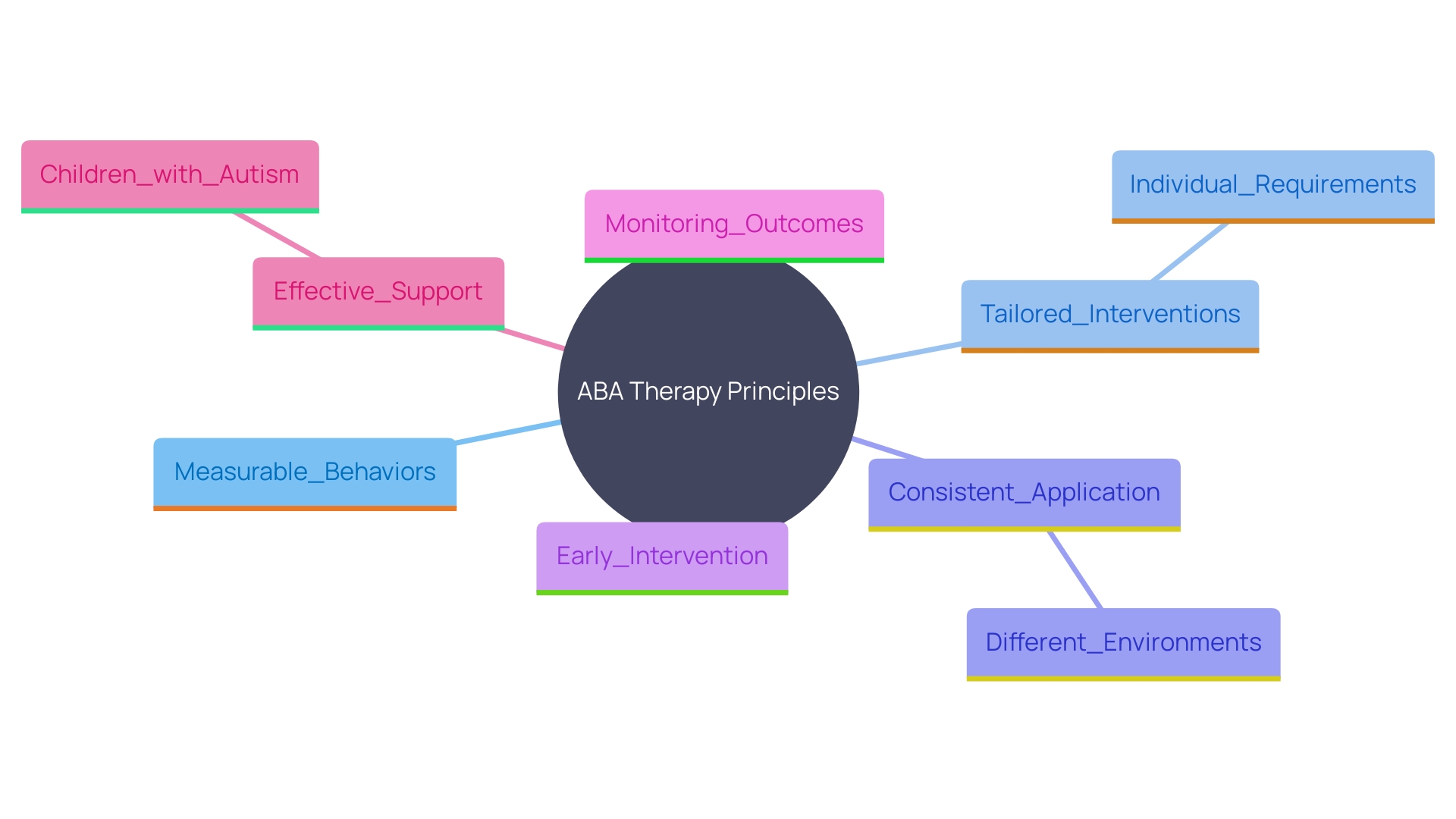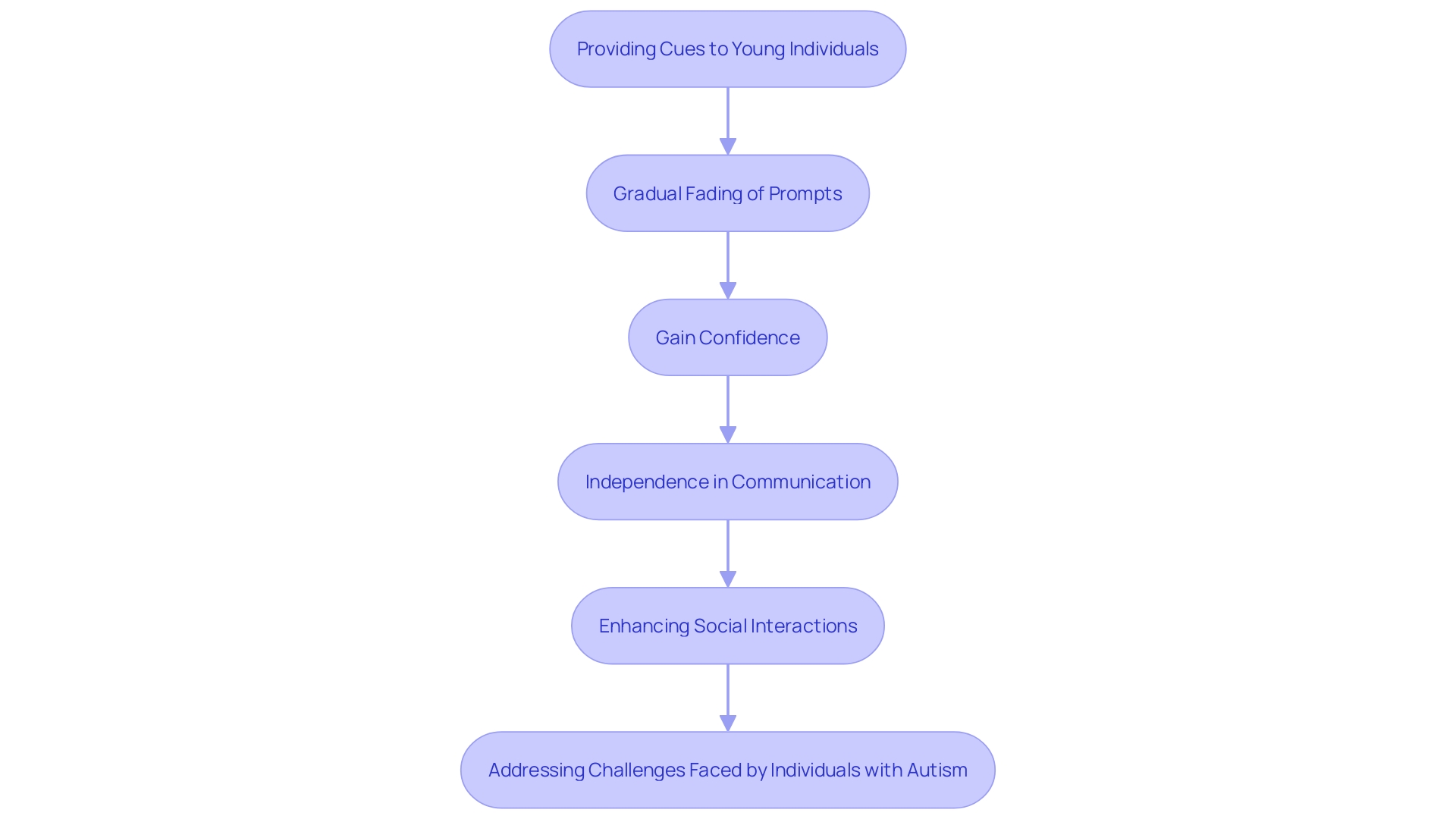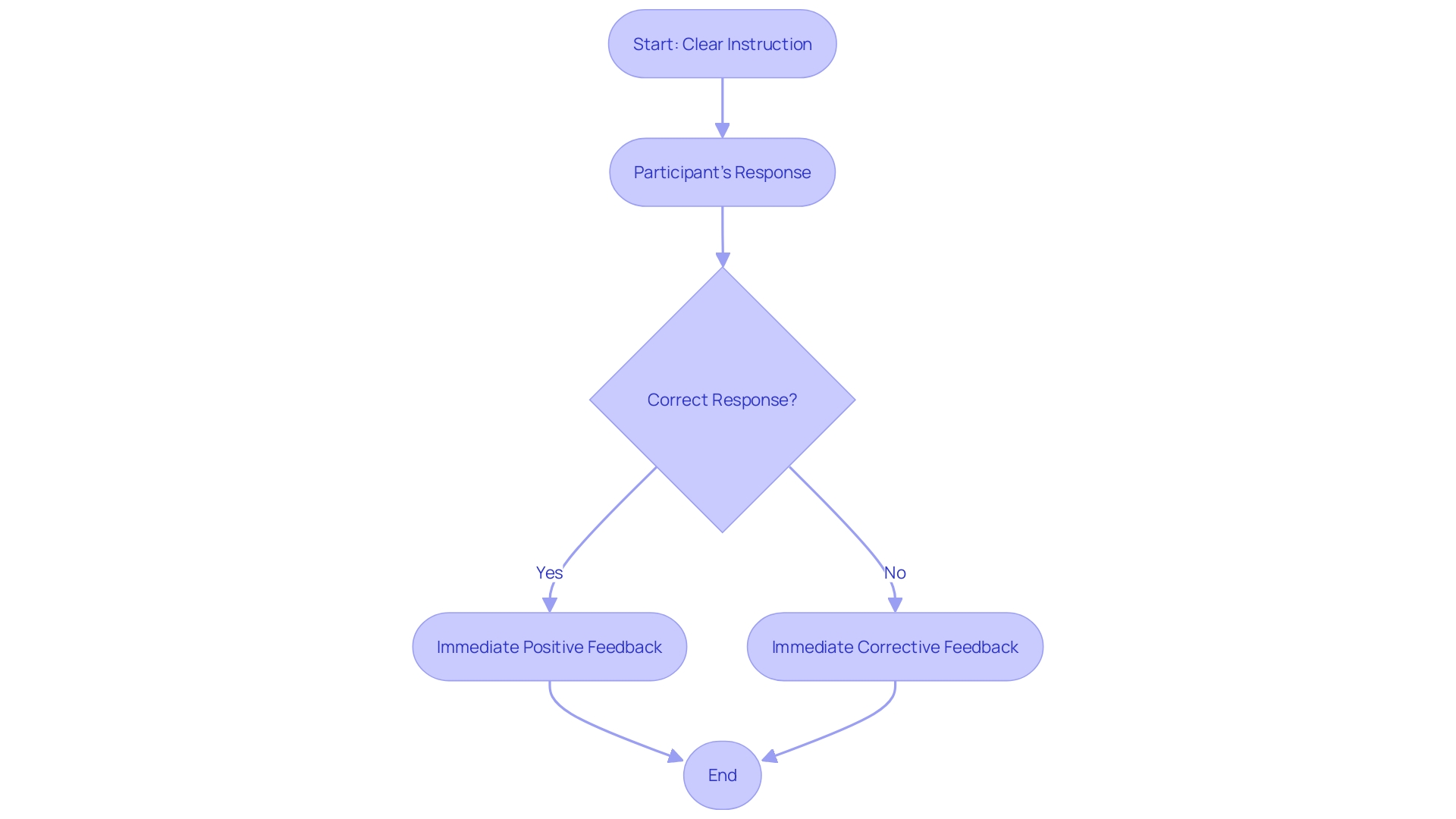Introduction
Navigating the complexities of raising a child with autism can be challenging, but understanding and utilizing Applied Behavior Analysis (ABA) therapy can make a significant difference. This article delves into the key principles and techniques of ABA therapy, offering invaluable insights into how it can enhance communication skills, foster meaningful growth, and create a supportive environment for children with autism. From the foundational principles of ABA to specific strategies like Positive Reinforcement and Functional Communication Training, this comprehensive guide equips parents and professionals with the tools needed to support and empower children effectively.
By exploring the benefits of early intervention and the importance of collaboration, the article underscores how tailored, evidence-based approaches can lead to transformative outcomes, ensuring that every child has the opportunity to thrive.
Key Principles of ABA Therapy
Applied Behavior Analysis (ABA) therapy is founded on essential principles that guide its practice and ensure its effectiveness. Central to ABA is the focus on observable behaviors, which allows both parents and professionals to identify and measure progress clearly. This principle is vital as it enables the tracking of developmental milestones and the adjustment of techniques based on real data. The focus on gathering and examining information not only guarantees that approaches are grounded in evidence but also enables the tailoring of strategies to address each individual's distinct requirements. This personalized method is especially vital for youngsters with autism, as it tackles their unique challenges and promotes significant development.
For instance, early intensive behavioral support, a type of ABA, is frequently advised for young children with autism because of its organized and repetitive characteristics, which can greatly improve communication skills and adaptive behavior. Recent studies, such as those led by Dr. Patricia Muller and Dr. Jessica Lester, highlight the significance of early, developmentally suitable actions. These initiatives are crafted to empower families and directly tackle fundamental social challenges, making ABA a viable and effective choice for numerous practitioners.
Furthermore, the flexibility of ABA to diverse settings, including home, school, and clinical environments, guarantees that young individuals receive consistent support across different contexts. This consistent application is crucial for reinforcing learned behaviors and facilitating long-term development. As Dr. Leandra Berry observes, early and dependable diagnosis followed by evidence-based approaches like ABA can significantly aid young individuals by offering timely and suitable assistance.
However, it is important to remain vigilant about monitoring and reporting the outcomes of these interventions to ensure their effectiveness and prevent any potential adverse effects. By basing interaction methods on these essential ABA principles, parents and professionals can establish a supportive and favorable atmosphere for youngsters' learning and development, ultimately resulting in improved long-term results.

ABA Techniques for Communication Skills
ABA therapy provides a variety of methods aimed at enhancing interaction abilities in young individuals with autism and similar conditions. These methods are designed to improve both verbal and non-verbal interaction capabilities. By utilizing structured approaches such as modeling, reinforcement, and prompting, caregivers can significantly improve a child's ability to express themselves, leading to more meaningful interactions with peers and adults.
Dr. Hannah Schertz, a professor at Indiana University, highlights the significance of early action in tackling interpersonal challenges, which are key to autism. Her research highlights how parental mediation can be pivotal in promoting these skills. Evidence supports that strategies like these can lead to substantial improvements. For instance, naturalistic developmental behavioral interventions have shown significant positive effects on social interaction, adaptive behavior, and even measures of autism diagnostic characteristics.
Moreover, technological tools such as the Autism BASICS app provide daily activities and a library of learning-focused tasks, fostering collaboration between parents and children. Such tools illustrate how integrating technology with ABA techniques can create engaging and effective communication-building experiences.
As therapists at Spazio Autismo suggest, integrating these activities into ABA therapy can make a considerable difference. The Autism ABC app, for example, offers adaptable content that supports cognitive, linguistic, and motor skills development, ensuring inclusivity across various developmental stages. These resources highlight the potential of combining structured ABA techniques with innovative tools to improve interaction skills effectively.
Positive Reinforcement in ABA Therapy
Positive reinforcement is a fundamental method in ABA therapy, essential for promoting effective interaction skills. This method involves rewarding desired behaviors to boost their occurrence. Specifically, in interaction, this could mean offering praise, tokens, or other rewards when a child successfully utilizes words or gestures to express their needs. Studies have demonstrated considerable advancements in interpersonal interactions through these behavioral approaches. For example, a study involving a 13-year-old female with ASD used a combination of response interruption, redirection, and self-monitoring to decrease inappropriate comments and interruptions. The action resulted in a dramatic reduction in these behaviors, highlighting the power of consistent positive reinforcement.
Dr. Hannah Schertz from Indiana University highlights the significance of parental guidance in early support, focusing on interpersonal interaction as it is a fundamental challenge in autism. Her research corresponds with findings that developmental interventions significantly improve interpersonal interaction and adaptive behaviors. By consistently applying positive reinforcement, caregivers can not only motivate youngsters to communicate more effectively but also foster long-term improvements in their social interactions and language skills.
Moreover, integrating technology, as seen in a framework developed in collaboration with Spazio Autismo, has shown promising results. This approach enhances therapy sessions' efficacy, reduces non-therapeutic time, and increases patient focus. Such techniques emphasize the various advantages of positive reinforcement, establishing it as a vital approach in ABA therapy to assist youngsters with autism in their development of interaction skills.
Functional Communication Training (FCT)
Functional Communication Training (FCT) is a crucial method that empowers young individuals to replace challenging behaviors with effective communication skills. By understanding the underlying reasons for a young person's behavior, FCT helps them learn alternative ways to express their needs. For example, if a young person frequently cries to gain attention, FCT teaches them to use words or symbols instead. This method not only improves interaction skills but also greatly decreases irritation for both the youngster and their guardians.
Studies highlight that early childhood programs, like FCT, are crucial in enhancing interpersonal skills in children with autism. Evidence indicates that developmental initiatives significantly improve interactions with caregivers and tackle fundamental issues related to autism, such as challenges in social communication. Moreover, naturalistic developmental behavioral strategies have been found to enhance adaptive behavior, language, and play skills, highlighting the multifaceted benefits of approaches like FCT.
The involvement of parents and educators is essential in the successful implementation of FCT. Experts, such as speech-language pathologists (SLPs) and educators, play an essential role in directing and assisting these initiatives. A collaborative approach ensures that young individuals receive consistent and effective support across different environments.
Ultimately, interventions like FCT provide young individuals with autism access to developmentally appropriate and family-centered early support. This tailored approach addresses the core social challenges of autism, fostering a more inclusive and supportive environment for the individual's growth and development.
Prompting and Fading Techniques
Prompting involves providing cues to help young individuals initiate or continue communication, which can range from verbal prompts to physical gestures. For example, a study on a 13-year-old girl with autism spectrum disorder (ASD) demonstrated that intervention can significantly reduce inappropriate comments and interruptions during conversations. Once a young person begins to communicate more effectively, fading is introduced. This process gradually reduces the prompts until the young one can communicate independently. This approach enhances young people's confidence in their expressive skills, promoting independence and self-expression. Data indicates that developmental programs like these enhance interaction with caregivers and tackle fundamental issues related to autism, especially obstacles in interpersonal exchanges. Dr. Hannah Schertz highlights the significance of assisting parents in utilizing mediated learning methods to enhance social interactions, particularly in young individuals. Such interventions are crucial, given that early intensive behavioral interventions are recommended to support skill gain and positive long-term outcomes in individuals with autism.

Video Modeling for Skill Development
Video modeling is an effective method that utilizes video demonstrations to instruct social skills to young learners. By watching peers or adults participate in specific interaction behaviors, children can learn and imitate suitable responses and techniques. This method stands out due to its combination of visual and auditory cues, which enhances understanding and replication of desired behaviors. Studies show that such developmental programs greatly enhance interpersonal exchanges, especially when parents participate in the initial phases. Dr. Hannah Schertz, a professor at Indiana University Bloomington, emphasizes the significance of assisting parents in mediated learning practices to enhance interaction skills in toddlers at risk for autism. Her research shows that early support aimed at fundamental autism difficulties, like interpersonal interaction, can result in improved long-term results. Furthermore, results from an extensive examination of 252 studies encompassing 13,304 participants indicated notable enhancements in interpersonal interactions through naturalistic developmental behavioral interventions, with a Hedges’ g value of 0.35 (95% CI, 0.23 to 0.47; P<0.001). Thus, video modeling not only facilitates skill acquisition through engaging means but also aligns with evidence-based practices promoting social interaction development.
Discrete Trial Training (DTT) for Complex Skills
Discrete Trial Training (DTT) systematically breaks down communication skills into smaller, manageable parts, allowing young learners to master complex abilities gradually. Each trial consists of a clear instruction, the participant's response, and immediate feedback, creating a structured learning environment that enhances retention and understanding. This method is especially effective for young individuals with neurodevelopmental disorders, as it ensures consistent reinforcement and helps them transfer learned skills to various contexts, whether at home, school, or clinical settings. By offering prompt responses, DTT assists children in cultivating more complex interaction abilities over time, enhancing better relationships and overall language growth.

Benefits of ABA Communication Therapy
The profound benefits of ABA interaction therapy extend far beyond mere words. Enhanced communication skills lead to improved social interactions and reduced frustration. As young individuals become more skilled at articulating their needs and feelings, they gain confidence, nurturing a sense of autonomy that positively influences different facets of their lives. This confidence is rooted in individualized assessment and goal setting, ensuring that each child's progress is closely monitored and strategies are adapted to meet their unique needs.
Studies highlight the success of developmental and naturalistic approaches in enhancing relational interaction, adaptive behavior, and even language abilities. Evidence indicates that developmental interventions improve interpersonal interactions with caregivers, while naturalistic developmental behavioral interventions tackle fundamental issues related to autism, especially interaction skills. In a recent study, significant improvements in social interaction were observed, showcasing the potential of these tailored approaches.
Case studies highlight the transformative power of ABA therapy. For instance, one successful ABA program emphasized continuous monitoring and strategy adjustment, leading to significant progress in the communication abilities of young individuals. Furthermore, the integration of these techniques into daily family routines has been shown to be feasible and effective, empowering families to support their offspring's development more effectively.
Despite the diverse opinions among researchers and clinicians regarding the best interventions, the consensus remains clear: early, individualized, and developmentally appropriate interventions are crucial. With ongoing research and the development of new materials, practitioners are better equipped to provide customized support that directly addresses the core difficulties of autism, ultimately fostering an environment where young individuals can thrive.
Implementing ABA Techniques at Home
Parents play an instrumental role in the success of ABA therapy by creating a nurturing environment that facilitates continued learning. Incorporating interaction chances into everyday practices, consistently using reinforcement, and sustaining patience and support can significantly enhance a youth's expressive skills. Proof highlights the significance of developmental strategies in improving interpersonal interactions, which are essential for tackling fundamental autism obstacles.
Collaboration with professionals not only empowers parents but also equips them with the skills needed to support their child's development effectively. As Dr. Hannah Schertz from Indiana University emphasizes, early support facilitated by parents can significantly enhance communication skills in toddlers displaying early indicators of autism. This approach leverages the unique parent-child relationship as a venue for social learning, promoting active engagement.
Furthermore, recent research, including projects led by Michael Sandbank, PhD, highlights the effectiveness of developmental strategies over more intensive methods. These interventions, such as joint attention and symbolic play, are tailored to meet the needs of young individuals and can be seamlessly incorporated into daily family routines.
Ultimately, by working alongside professionals and utilizing evidence-based strategies, parents can foster an environment that supports their child's growth and development, laying a strong foundation for future success.
Conclusion
The exploration of Applied Behavior Analysis (ABA) therapy highlights its vital role in enhancing the communication skills of children with autism. By focusing on observable behaviors and employing data-driven techniques, ABA equips parents and professionals with the necessary tools to track progress and tailor interventions to individual needs. The principles of ABA, such as positive reinforcement and functional communication training, not only address specific challenges but also foster meaningful growth and independence in children.
Key techniques, including prompting, video modeling, and discrete trial training, further illustrate the effectiveness of ABA in developing complex communication skills. These methods enable children to express themselves more effectively, leading to improved social interactions and reduced frustration. The incorporation of technology and innovative resources into ABA practices enhances engagement and provides additional support for families navigating this journey.
Ultimately, the benefits of ABA communication therapy extend beyond improved language skills; they empower children to interact confidently with their peers and caregivers. By fostering a collaborative environment between parents and professionals, tailored interventions can be seamlessly integrated into daily life, ensuring that children receive the consistent support they need. Early, individualized, and developmentally appropriate strategies remain essential in creating a nurturing atmosphere where every child can thrive, emphasizing the transformative potential of ABA in the lives of children with autism.




